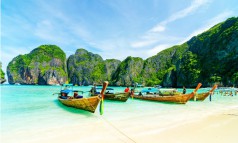



















Sunday, Feb 23, 2025 09:00 [IST]
Last Update: Saturday, Feb 22, 2025 16:59 [IST]
Window Seat
PrayagrajMahaKumbhMela 2025 saw multiple tragic incidents, despite elaborate arrangements. On February 15, 2025, a stampede at New Delhi Railway Station resulted in at least 18 deaths. The chaos erupted as thousands of pilgrims attempted to board trains bound for the MahaKumbh festival. Confusion over platform changes led to overcrowding on a footbridge, causing passengers to slip and fall, which triggered the stampede.
Earlier, on January 29, 2025, a pre-dawn stampede at Prayagraj claimed the lives of at least 30 people and injured many others. The incident occurred as tens of millions gathered to participate in the holy dip at the sangam (confluence of the Ganges, Yamuna, and mythical Saraswati rivers).
Stampede-related deaths have occurred before at KumbhMela. In the first Kumbh after independence in 1954, which took place in Prayagraj (then called Allahabad) between 500 to 800 people died in stampedes.
Stampede deaths happen across the world, where there is a large crowd, mostly in religious congregations.
A 2015 stampede in Mina during the Hajj killed over 2,400 pilgrims. On 28 May 2022, 31 people were killed and seven others injured in a stampede in Port Harcourt, Rivers State, Nigeria, at a church event.
Why do such tragic incidents regularly happen, mostly in religious congregations?
Besides failure to anticipate the crowd serge and taking appropriate action, mismanagement, preferential treatment to the VIPs neglecting the genuine needs of common people triggering public resentment, there are some more reasons.
In Mahakumbh 2025 the crowd surge was far more because of the perception of achieving mokhya as ‘it falls once in 144 years’. This is also partly responsible for creating a feeling of FOMO (fear of missing out): if I do not visit, I won’t be able to visit another mahakumbh, which many others are visiting. It triggered a crowd surge.
IS Johar
Remember I S (IndraSen) Johar?
The talented but idiosyncratic actor, director, writer, who created one of the most successful film franchises in India with the Johar-Mehmood series, where he collaborated with another comic genius, Mehmood. The first film was JoharMehmood in Goa (1965), which was inspired by the comedy films of the Bob Hope-Bing Crosby style "Road to..." series. It follows the misadventures of two friends as they navigate various challenges and humorous situations in the backdrop of Goa's independence struggle. The film was a commercial success and is remembered for its witty dialogues and comedic performances.
"JoharMehmood in Hong Kong (1971)" is another comedy film directed by I. S. Johar, featuring him and Mehmood in the lead roles. Similar to their previous collaboration, the film is a light-hearted comedy that takes the audience on a fun-filled journey through Hong Kong.
He also wrote and directed films such as Johar in Kashmir (1966), Jai Bangladesh (1971), AageBarho (1972), Kirchen (1972), 5 Rifles (1974), Amartava (1978), and Nasbandi (1978). Johar was known for his satirical approach to filmmaking. His film "Nasbandi" (Vasectomy) was a spoof on Prime Minister Indira Gandhi's failed policy of population control by coerced vasectomies during the period of Emergency. The film was banned when it was first released.
I S Johar was born 16 February in 1920 and died on 10 March 1984.
Digital-life balance
Only 3 out of 100 individuals in India have a healthy digital-life balance. A staggering 50% of individuals fell into the ‘poor’ category, struggling to disconnect from their devices, while another 10% had an ‘inadequate’ digital life balance. A recent India Today survey reveals this.
The State of Emotional Wellbeing Report 2024 also reveals the many emotional wellbeing issues affecting Indians and the efforts that are needed to tackle them.
A sizable number of senior citizens keep themselves glued to their digital devices ‘just to pass time’. Denser socialization can probably wean them away from digital devices.
Tail piece: Life these days
Post on facebook page:
Don’t eat outside- because the food is not safe and regulated.
Don’t travel in trains- because you will not even get to your seats
Don’t breathe outside- the AQI is dangerous
Don’t pick up a random call – someone will digitally arrest you
Comment:
Toh fir kyakarun? Mar jayun?
